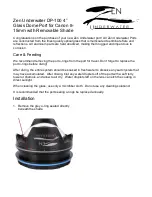
Chapter 2 - Technical Specifications
Confidential and Proprietary Information of ZTE CORPORATION
23
Um Interface
W i r e l e s s C h a n n e l
Main characteristics are as follows:
•
Co-channel interference protection ratio (static): C/I
≥
9 dB
•
Interference protection ratio of the adjacent channels:
≥
-9 dB
•
Interference protection ratio of the second adjacent channel:
≥
-43
dB
W i r e l e s s R F M o d u l a t i o n M o d e
ZXG10-OB06 possess MCS-1 ~ MCS-9 modulation and coding modes to
support EDGE services. MCS-1 ~ MCS-4 retains the GMSK modulation
mode, while MCS-5 ~ MCS-9 uses the 8PSK modulation mode. 8PSK
allows 3-bit data over each modulation signal on a wireless path, whereas
GMSK allows 1-bit data under the same conditions.
Different coding modes define different sizes of data blocks and channel
redundancy codes. In comparison with GPRS that features a mono
modulation technique, EDGE is capable of adapting to a more adverse and
wider wireless propagation environment.
T r a n s m i t t e r P e r f o r m a n c e
The following characteristics describe the transmitter performance:
•
Transmitter phase error:
•
Phase error of the transmitter is the error between the actual phase
and the theoretical one.
•
Root Mean Square of the BTS phase error less than 5° and the
peak value not over 20°.
•
Transmitter frequency error:
•
Transmitter frequency error is the error between the actual
frequency and the theoretical one.
•
BTS frequency error is less than 0.05 ppm.
•
Average transmitted carrier power (power amplifier output requirement:
40 W or 80 W):
•
There is 6-level static power control function. It can adjust
downwards six power levels with the step of 2 dB ± 1.0 dB, based
on the maximum output power. At the same time, BTS has the
downlink power-control function. It can decrease the power from
level zero to level 15 with the step of 2dB ± 1.5dB, based on the
set power level.
•
Specifications compliant with GSM 11.21 and GSM 05.05 are as follows:
•
Transmitted RF carrier power/time envelop
















































